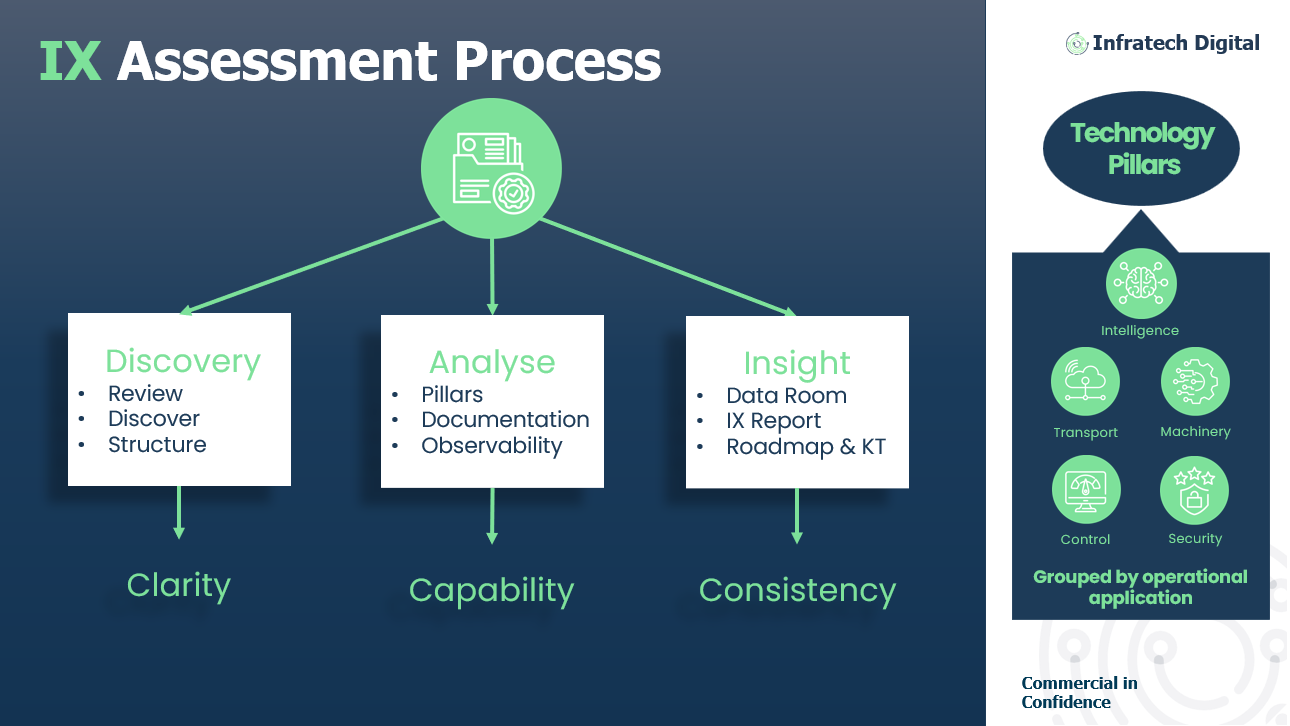1st Dec 2023
What is Infrastructure eXperience?
Businesses today talk a lot about CX or “Customer eXperience”… usually measured in Net Promotor Scores. A few years before that all the App and technology designers were obsessed with UX “User eXperience”. Before even that the phone companies used what they called “Mean Opinion Scores” to decide if a phone call was good enough to keep customers happy and paying the (usually rather large!) per minute charges.
Through all of this, Infrastructure eXperience or ‘IX’ has been there, we just weren’t talking about it.
Think back to your own personal experiences with modern infrastructure…
Have you ever seen the city redesign a road or intersection only for it to be so bad to drive on that they had to immediately put it back to its original design, or change it even further?
Have you ever had 5 bars of signal on your mobile phone but still couldn’t get a webpage to open?
Have you ever moved to a new PC or cloud service and had it run slower or take longer to get the work done than the one it replaced?
If any of these are familiar, you’ve experienced poor IX!
Infrastructure eXperience is defined as a score, from 1-5, of how well the supporting Infratech (that’s Infrastructure Technology for those new to us) is able to deliver the required service to the user.
That road network? Its goal isn’t to look pretty, it’s to move traffic. The signal on your mobile? Its only useful if you can browse the web and access data services. The new PC or Cloud service? Total waste of money if it doesn’t make your work faster.
Of course IX is a tricky thing to measure. Is a new network better because it has higher theoretical speeds? No. Not unless the average speeds to the user also improve.
This has been the challenge with Infratech for many years now. Everyone has been so caught up by Moore’s Law and the ever increasing theoretical capability of our technology that we often don’t stop to question whether the experience its delivering is actually any better. Bill Gates once said “no one will ever need more than 64KB of RAM” – well as I’m writing this to you my PC is using 14.7GB of RAM to run the operating system, a few chat windows and a word processor! How much of that added memory requirement has improved my experience?
Technology should never be replaced because its old.
Instead, organisations need to learn to understand and cultivate focus on steady improvement of their Infrastructure eXperience. This will guide them to determine what technology to replace, when and with what. Often poor decisions in the past have left organisations with mountains of technical debt – technology which not only doesn’t benefit IX, but actively detracts from it! This is because the tech industry has been interested in only one thing – selling you new technology! They don’t spend the time it takes to understand how to effectively retire the existing technology, so bits get left hanging around. The net result, lots of spend on new technology with a steadily decreasing IX and mounting technical debt.
Most of us can relate to the fact that our personal experience with technology is often more advanced and in many ways superior to our work experience. That’s because the typical service provider for consumer tech ruthlessly retires technology. That phone from 5 years ago? Not supported, buy a new one. Of course this isn’t ideal either, infrastructure is big, costly, complex. Imagine if we “threw out and replaced” all the roads and rail every 4-5 years? That’s what the tech vendors would have us do if they were in charge!
The Infratech 5Cubed Method and its 5States concept help resolve this challenge. By understanding, for each piece of technology, where it is in its lifecycle:
- Procurement
- Deployment
- Operation
- Migration
- Divestment
One can now understand the impact of that technology on the overall IX of the organisation. Understanding is the first step towards having a positive impact.
Armed with the knowledge of that impact, its then possible to create a backlog of work that’s needed to move the technology forward to its next state. Once we have that roadmap, we can create detailed “sprint plans” for the work. We can also understand what the impact should be, and therefore assure (measure) it after the work is complete. Finally we can iterate across the organisation doing the same with all of the interconnected technologies. In this way IX is constantly improved, and spend on “refresh” is minimised.
If your mission is to deliver better CX, we think you need to take a hard look at your IX first.
IX makes everything you are trying to do as a digital enterprise possible.
Don’t be one of the statistics, the 70% of organisations who fail digital transformation, because no-one laid the foundations for success.
The five pillars of Infratech are what deliver solid, predictable IX outcomes.

